It’s known across the state as “The People’s Building.” Designed by Architect Cass Gilbert and dedicated on June 20, 1932, the nearly 87-year-old Capitol building houses the West Virginia Legislature and hosts various state employees and visitors to the campus daily.
In January 2018, work began on a project to repair water leaks in areas where the gold and gray dome meet the limestone. Over time, the water had damaged the plaster between the windows visible below the dome. As part of the $13.52 million project, drain pipes were replaced, a secondary lining system installed, and the gutter system updated. This work, which provided new water proofing for the Capitol building, was needed to ensure the strength of the building and its structure, as well as its future.
By the project’s completion date, employees and visitors to the campus alike will also notice new interior finishes, new five karat gold-leaf gilding, reconfigured portal windows, and clean limestone cornice stones below the dome.
Below are some photos to showcase the progress of this project courtesy of the West Virginia Department of Administration.
June 17, 2015: The lower level rotunda and chandelier is pictured from above.
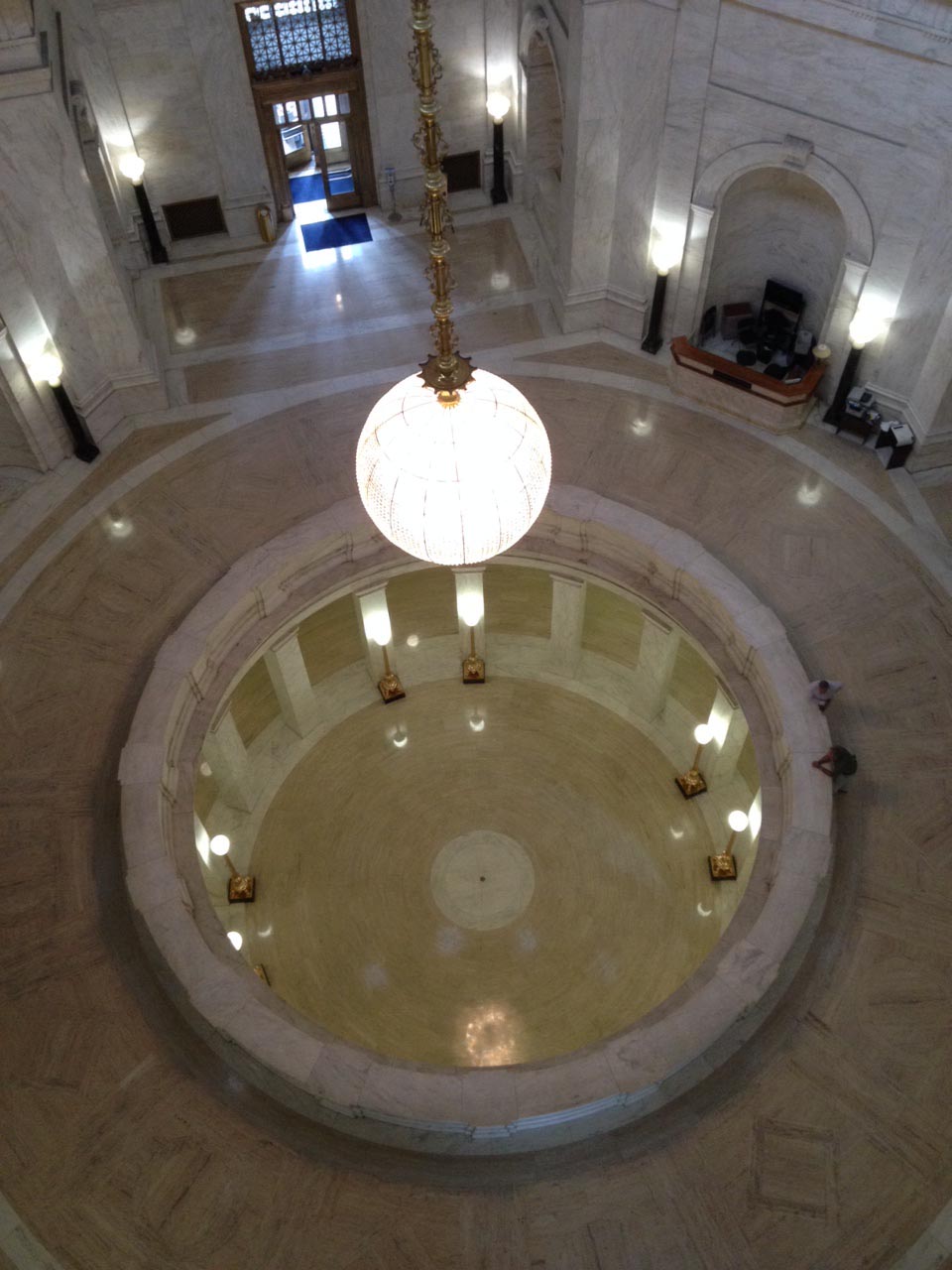
February 6, 2018: Work begins to disassemble the chandelier.
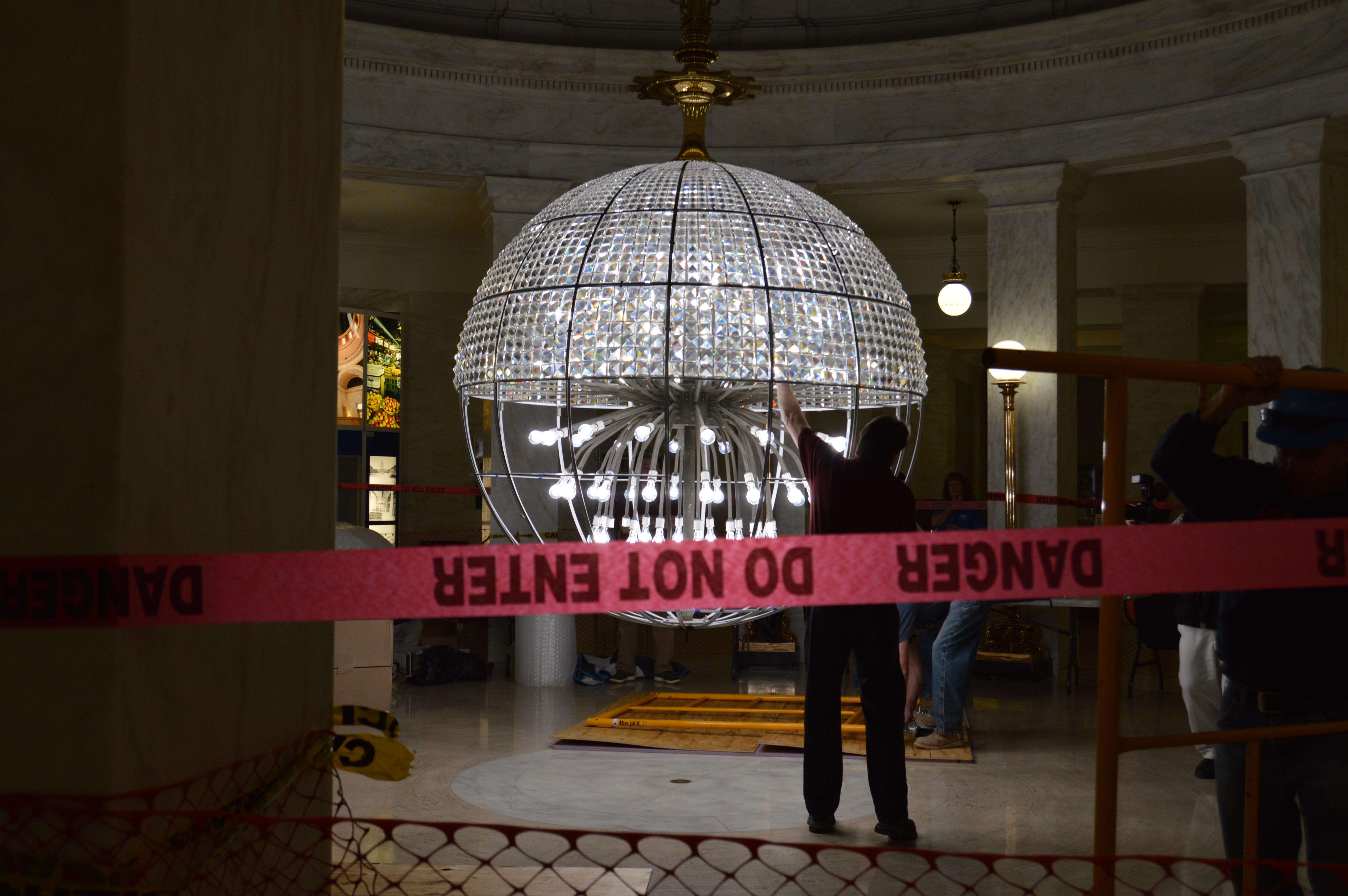
June 25, 2018: The interior scaffolding starts to go up.
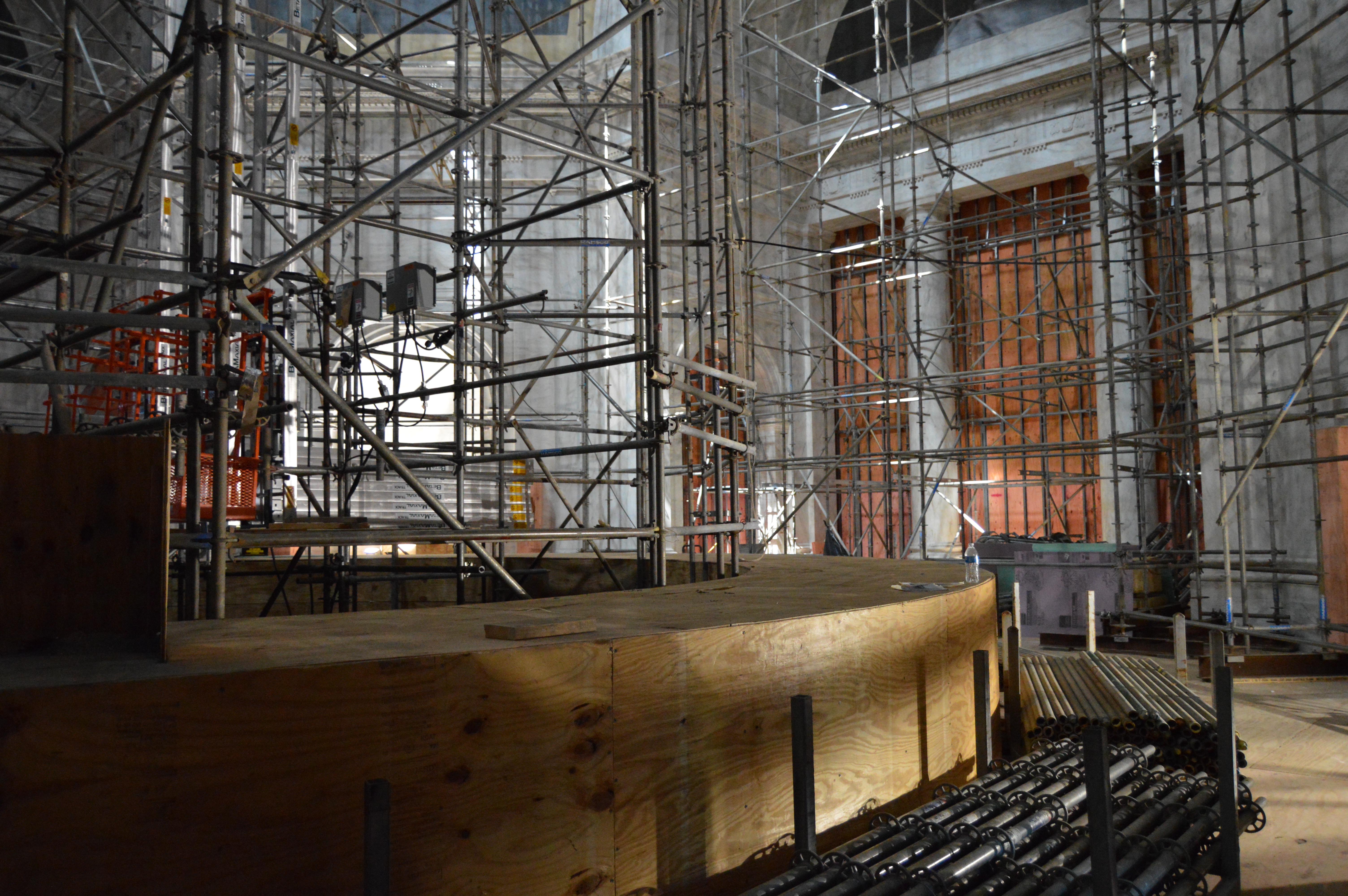

Here, the fully completed interior scaffold can be seen from below.
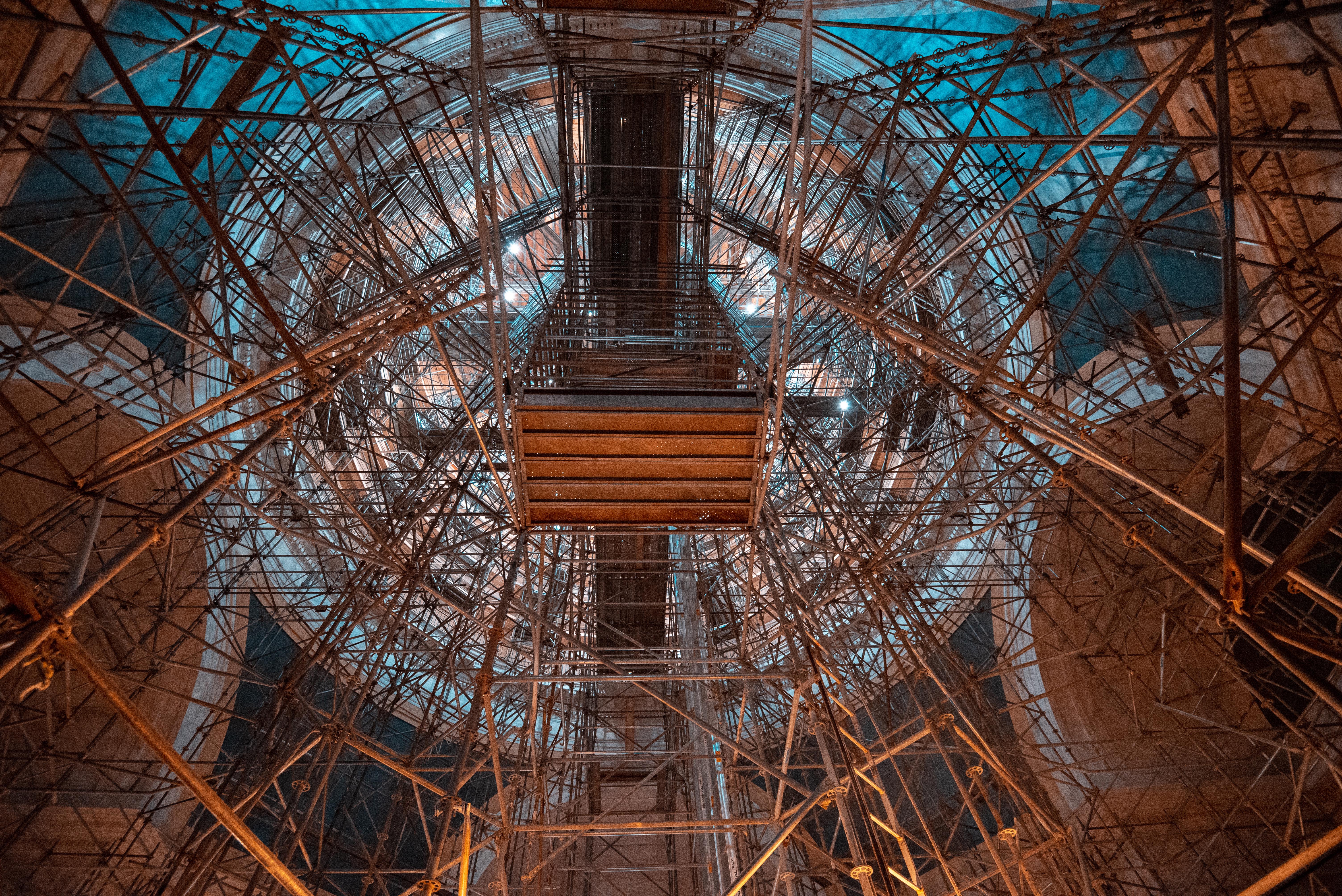
The "dance floor" can be seen in this image from February 28, 2019. As part of this project, the paint on the inner dome was completely stripped and the walls prepped for a new coat.
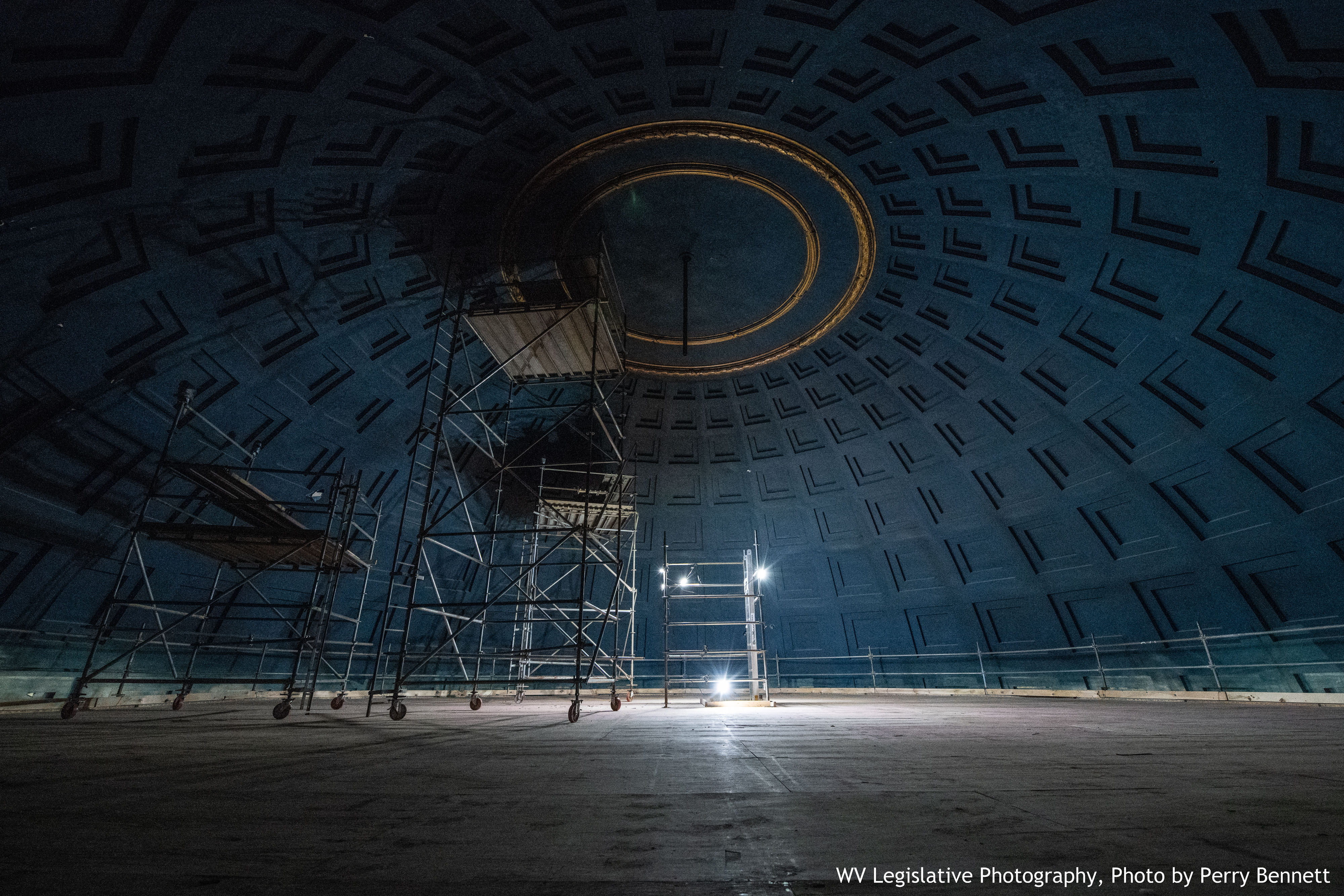
Water damage can be seen on the plaster inside the rotunda during a visit into the dome on March 20, 2019.
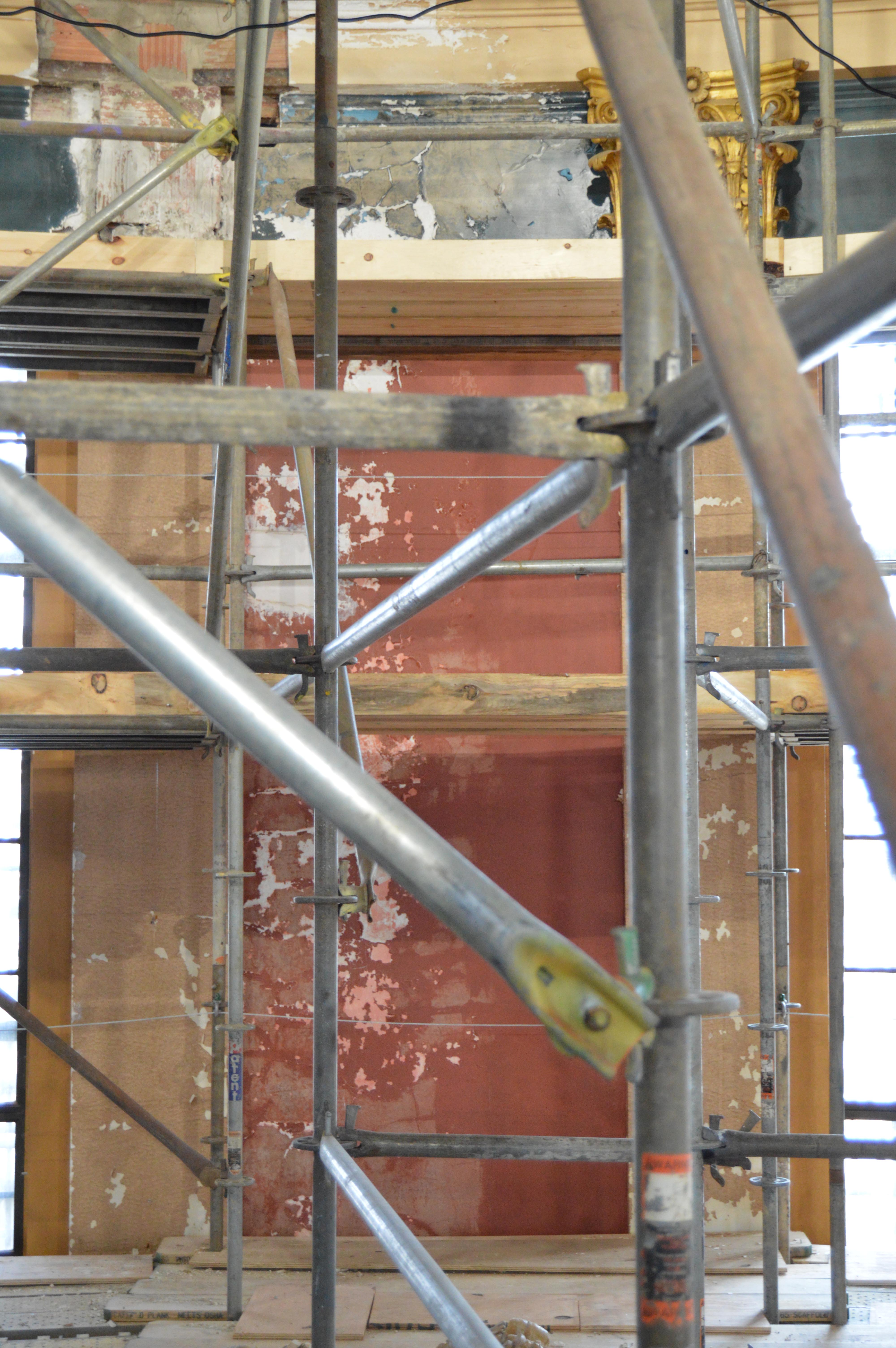
The same day, scaffold up to the exterior of the dome could be seen.
Preparations were made to enclose the dome with the scaffold.
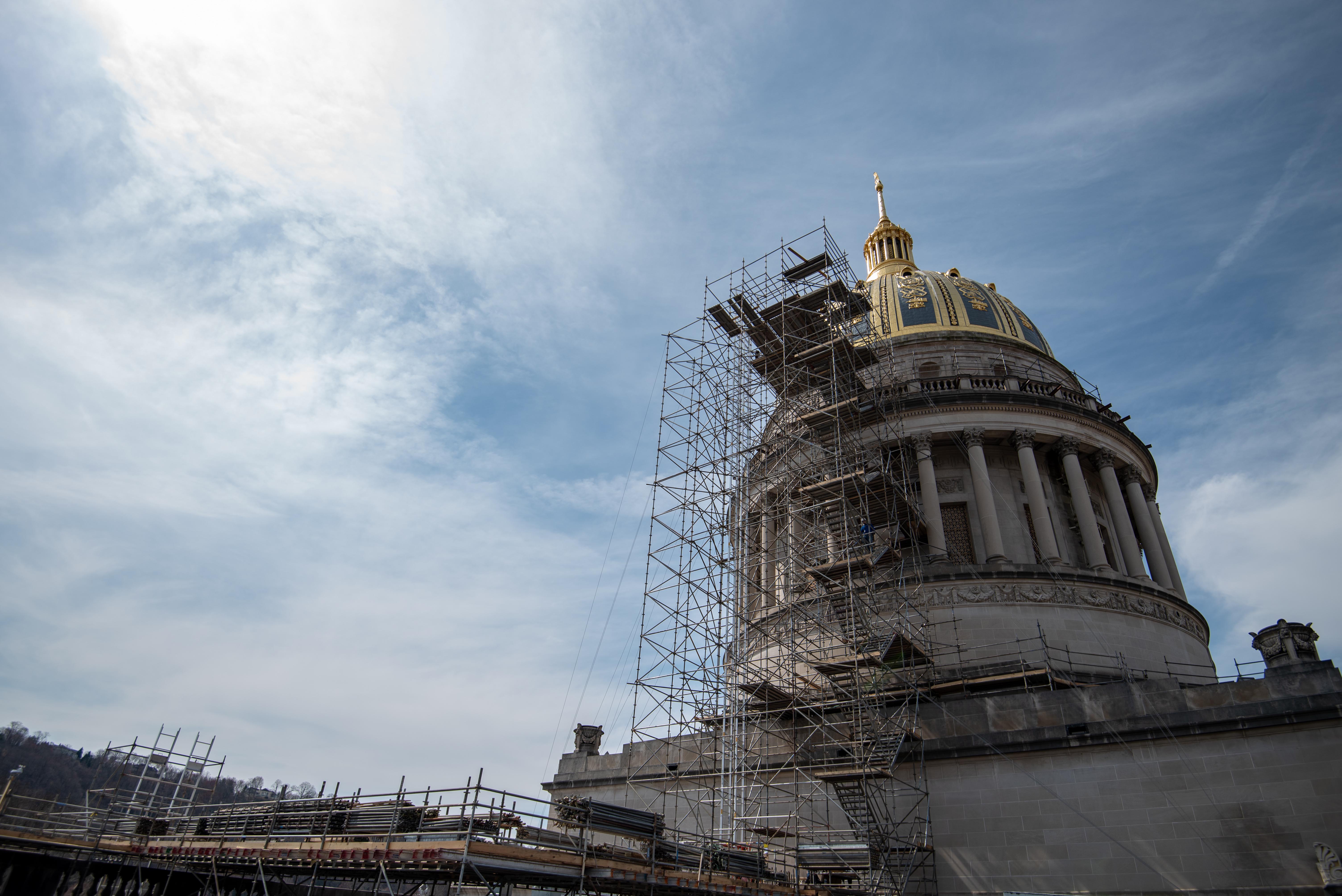
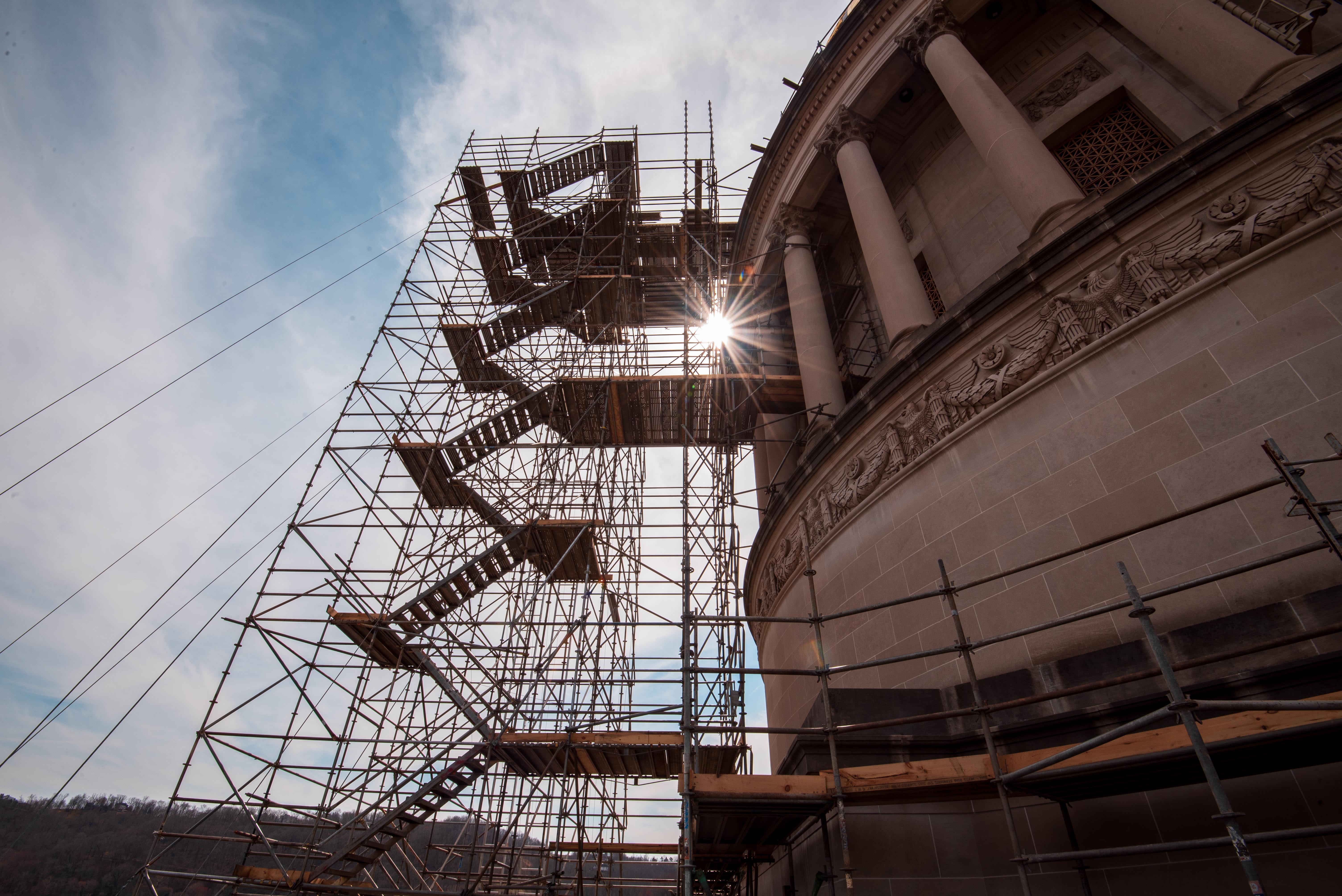
In late April 2019, work on the scaffold continued toward the observation deck.
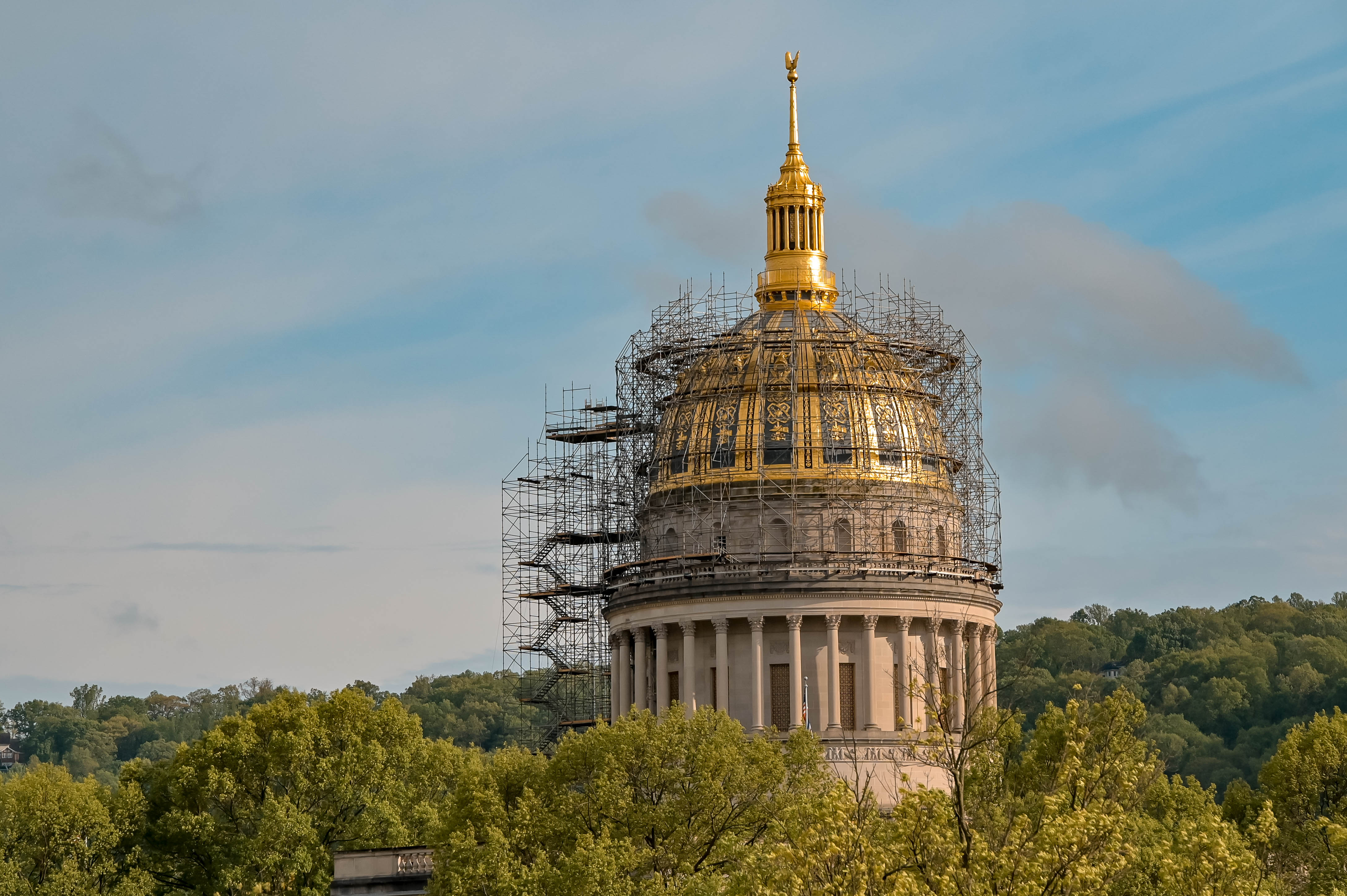
By May 22, 2019, the dome could be seen half covered. The protective covering was used to protect the dome from the weather elements while the project was ongoing.
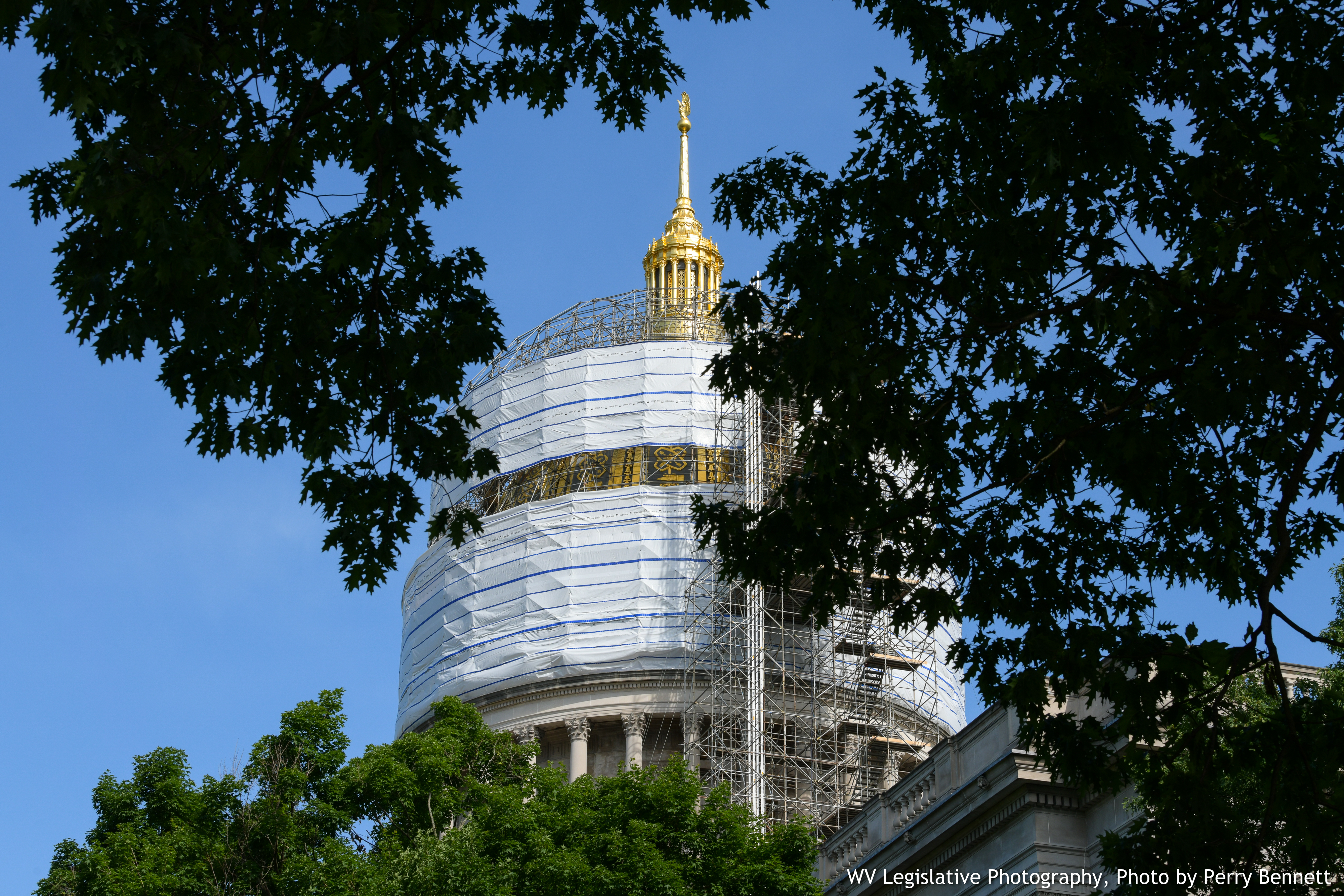
From below, workers could be seen securing into place the top portion of the protective dome covering.

October 24, 2019: Workers removed paint from the walls of the inner dome. As part of the project, the paint was completely stripped and a new coat applied.
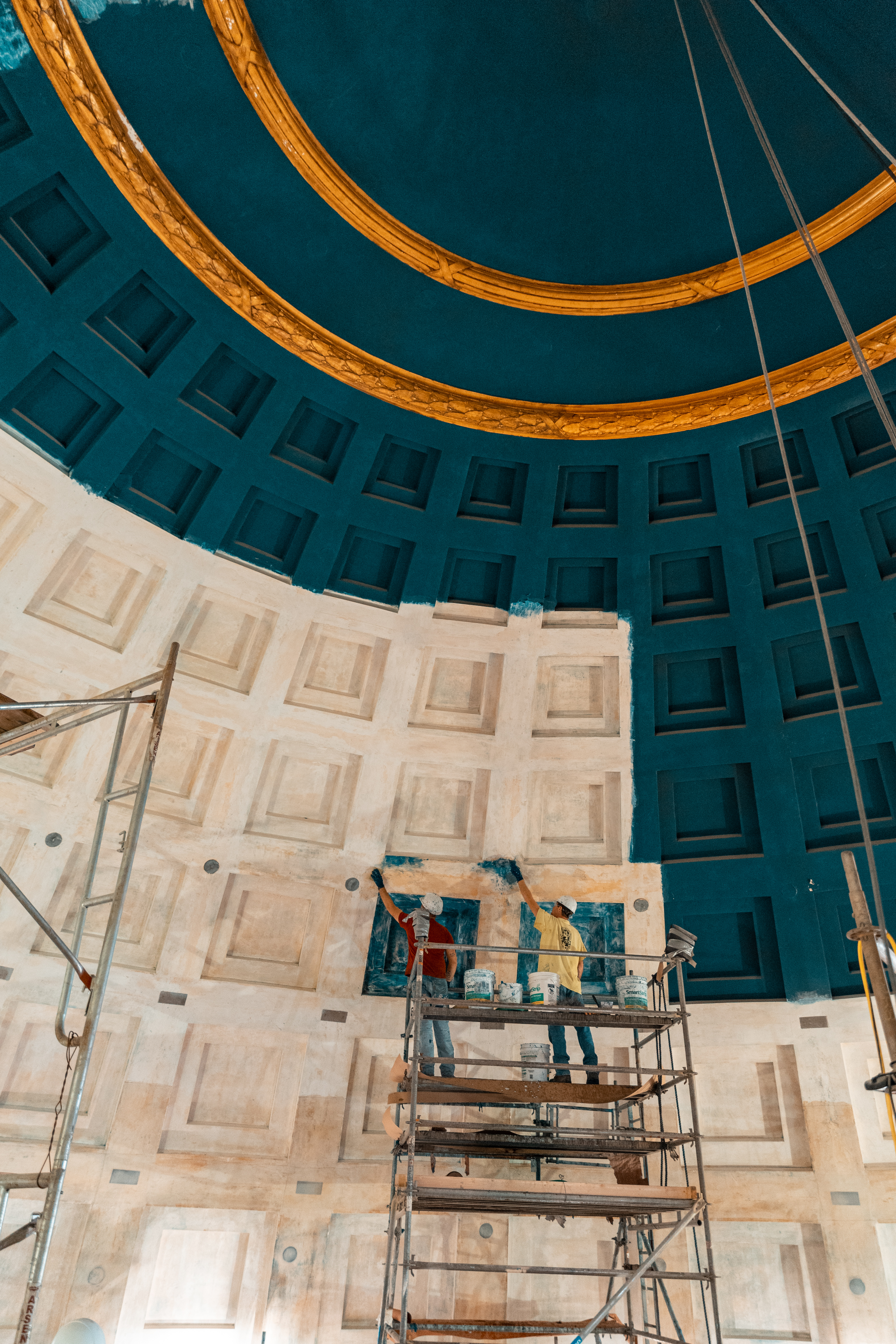
As part of the project, the 2,300 pound limestone blocks at the base of the dome were hoisted down to the work yard, cleaned and repaired, and then put back into place and sealed. Meanwhile, a lead copper flashing was installed and tested to ensure no water could get into the structure moving forward.


December 12, 2019: The final limestone cornice storn was put back into place at the Springline.